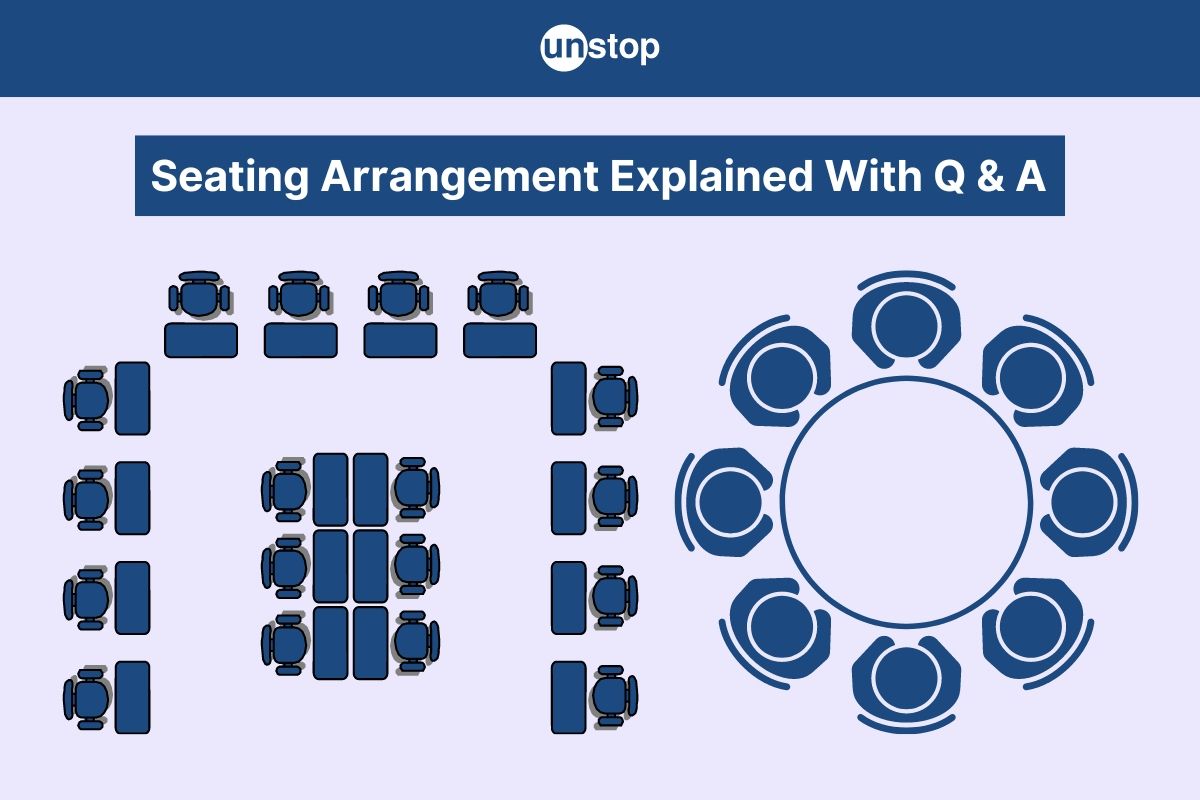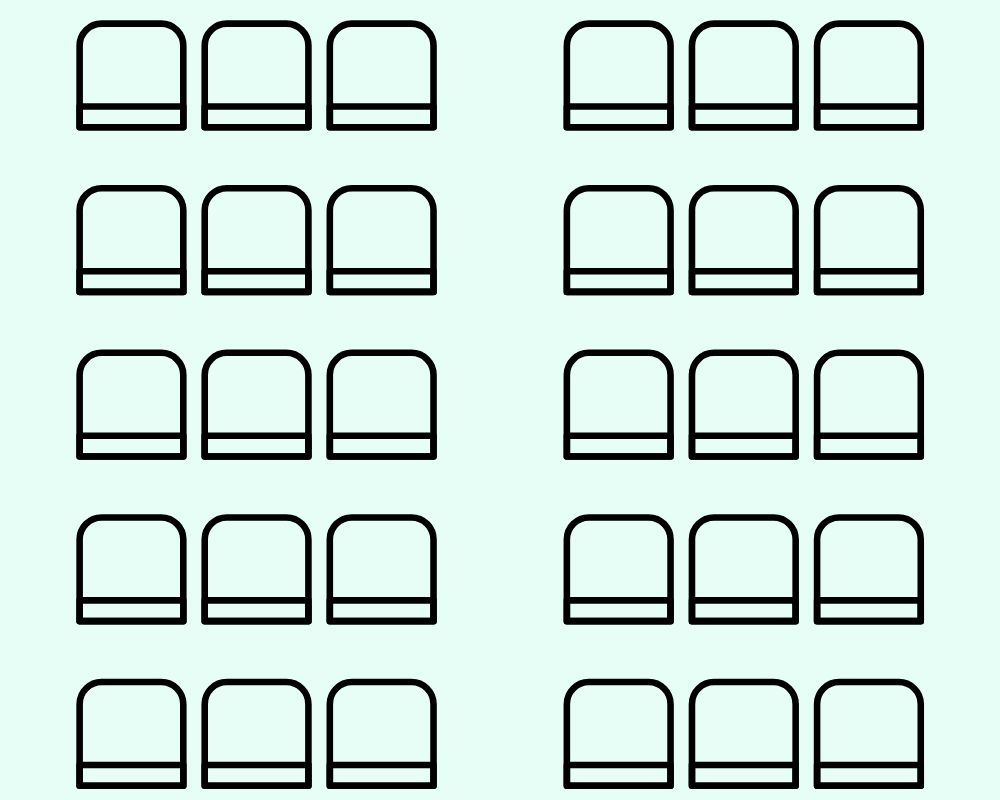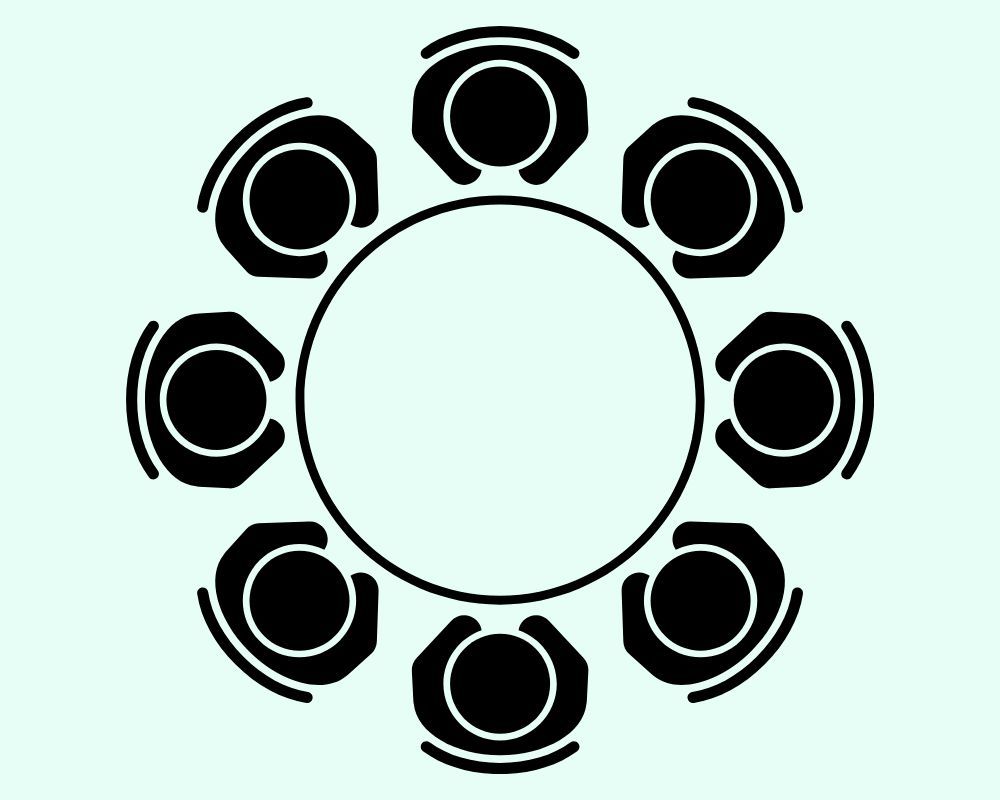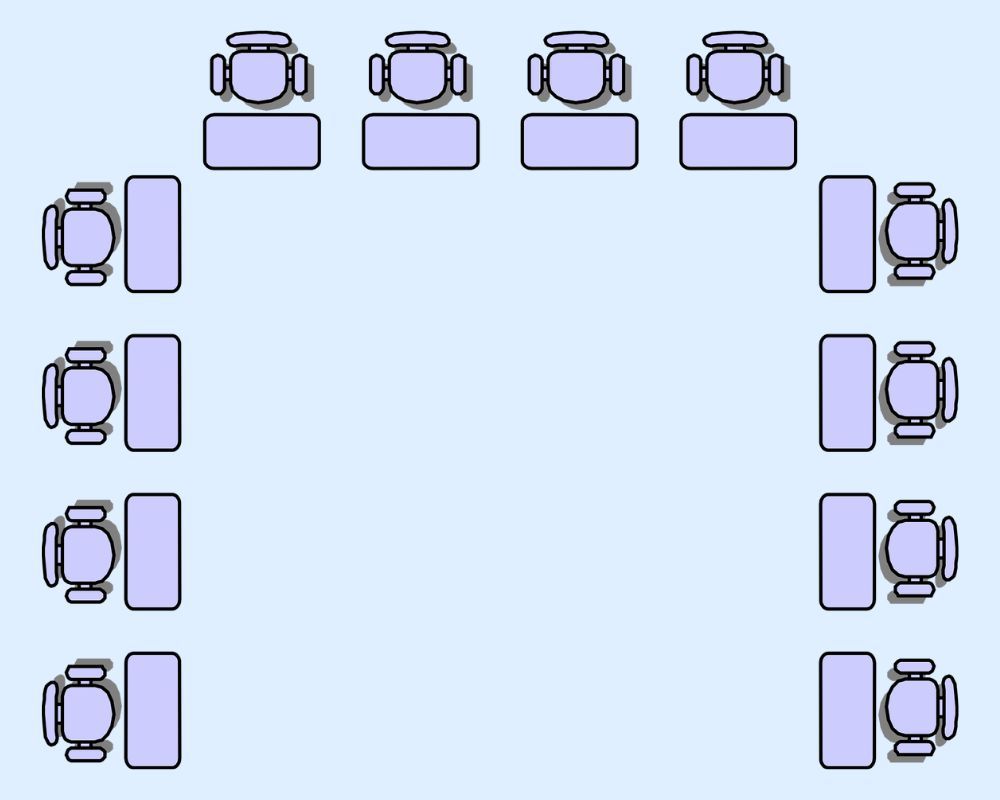- Step 1: The Groundwork
- Step 2: The Three Sections
- Step 3: Practice Makes Improvement
- The Secret Ingredient
- Understanding Basics Of Number Series
- Types Of Number Series Reasoning Questions
- Addition & Multiplication In Number Series
- Square & Cube-Based Number Series Patterns
- Missing Terms & Arranging Sequences
- Tricks & Tips For Solving Number Series
- Selected Number Series Questions With Solutions
- Frequently Asked Questions (FAQs)
- Must Know Terminologies in Blood Relation Questions
- Basic Approaches to Solve Blood Relation Questions
- Types Of Blood Relation Questions
- Tips For Solving Blood Relation Questions
- Multiple Choice Questions (MCQs) with Detailed Explanation
- Conclusion
- Frequently Asked Questions (FAQs)
- Letter Series In Logical Reasoning
- Types Of Letter Series Patterns
- Tips For Solving Letter Series Reasoning
- Best Practice Question Samples With Answers
- Conclusion
- Frequently Asked Questions (FAQs)
- Basics of Problems On Age-Related Questions
- Formula to Solve Problems on Ages-Related Questions
- Types of Age-Related Questions & Examples
- Tips & Tricks for Solving Ages Problems
- Best MCQs on Problems on ages with solved answers
- Conclusion
- Frequently Asked Questions (FAQs)
- Definition of Calendar
- Understanding Days of the Week
- What is a Leap Year?
- Concept of Odd Days in a Century
- Tips For Solving Calendar Reasoning Questions
- Best Calendar Reasoning Questions with Answers (MCQs)
- Frequently Asked Questions (FAQs)
- Basic Concepts of Clock
- Structure of a Clock
- Angle Equilavalence in Clock
- Tips For Solving Clock Questions
- Selected Clock Questions & Answers (MCQs)
- Conclusion
- Frequently Asked Questions (FAQs)
- Understanding The Concept Of Direction Sense
- Tips For Effective Problem-Solving In Direction Sense
- Practical Test Practice Questions And Answers
- Conclusion
- Frequently Asked Questions (FAQs)
- Importance Of Dice Reasoning
- Dice Numbers In Dice Reasoning
- Classification Of Dice
- Constructed Vs Deconstructed Dice
- Tricks & Tips For Solving Dice Problems
- Practice MCQs With Detailed Answers
- Conclusion
- Frequently Asked Questions (FAQs)
- Alphanumeric Series Defined
- Alphanumeric Series In Reasoning Tests
- Tips & Strategies For Solving Alphanumeric Series
- Practice Sample Questions With Detailed Answers
- Conclusion
- Frequently Asked Questions (FAQs)
- Concept Of Mirror Image Reasoning Explained
- Important Terms In Mirror Image Reasoning
- Types Of Mirror Images
- Identifying Correct Mirror Image
- Finding Clock's Mirror Image
- Tips To Solve Mirror Images
- Selected Practice Questions With Answers
- Conclusion
- Frequently Asked Questions (FAQs)
- Concept & Overview Of Input-Output
- Input-Output In Competitive Exams
- Types Of Input-Output Problems
- Strategies, Tips & Tricks For Solving Reasoning Questions
- Selected Practice Questions With Answers
- Conclusion
- Frequently Asked Questions (FAQs)
- Importance Of Finding The Odd One Out
- Tricks And Tips
- How to Find The Odd One Out?
- Solved MCQs with Detailed Explanation
- Conclusion
- Frequently Asked Questions (FAQs)
- Understanding Key Concepts
- Exploring Different Ranking Types
- Formula And Application Of Order And Ranking
- Tips For Solving Order & Ranking
- Selected Practice Questions And Answers
- Conclusion
- Frequently Asked Questions (FAQs)
- Importance Of Pipes & Cistern Aptitude
- Key Terminologies used in Pipes and Cisterns
- Pipes and Cisterns Formula with Examples
- Pipes and Cisterns Shortcut Tricks
- Tips For Solving Pipes & Cistern Problems
- Selected Questions & Answers For Practice (MCQs)
- Conclusion
- Frequently Asked Questions (FAQs)
- Key Concept in Boats and Streams
- Formulas Of Boats & Streams
- Distance & Time Formula
- Tips For Solving Boats & Streams Questions
- Selected Practice Questions With Answers (MCQs)
- Conclusion
- Frequently Asked Questions (FAQs)
- Concept of Mixture and Alligation
- Types Of Alligation Questions
- Formula for Solving Mixture & Alligation
- Tips For Solving Mixture And Alligation
- Selected Questions With Answers For Practice
- Conclusion
- Frequently Asked Questions (FAQs)
- Concepts and Definitions Related to Time and Work
- Important Time And Work Formulas
- Tricks and Tips to Solve Time & Work Questions
- Time And Work MCQs with Detailed Solution
- Conclusion
- Frequently Asked Questions (FAQs)
- What is Harmonic Progression(HP)?
- Formula to find the nth Term in Harmonic Progression
- Formula to find the Sum of the nth Term in HP
- What is Harmonic Mean?
- Harmonic Progression Solved Best MCQs
- Conclusion
- Frequently Asked Questions (FAQs)
- What is Mensuration in Maths?
- What are 2D figures in Mensuration?
- What are 3D figures in Mensuartion?
- Basic Terminologies In Mensuration
- Basic 2D Formulas in Mensuration
- Basic 3D Formulas in Mensuration
- 2D vs 3D in Mensuration
- Solved Questions With Solutions (MCQs)
- Conclusion
- Frequently Asked Questions (FAQs)
- Relationship Between Time, Speed And Distance
- Conversion Units Time, Speed And Distance
- Average & Relative Speed: Two Trains Moving in the same or opposite direction
- Solved MCQs on Time, Speed And Distance
- Conclusion
- Frequently Asked Questions (FAQs)
- What is Simplification in Maths?
- BODMAS Rule in Simplification Explained
- Simplification & Approximation Relation
- Key Terms in Simplification
- Examples Of Simplification Techniques
- Simplification Questions With Solved Answers (MCQs)
- Conclusion
- Frequently Asked Questions (FAQs)
- Height And Distance Important Terms
- Right Angled Triangle In Trigonometry
- Trigonometric Ratios
- Solved Examples For Better Understanding
- Height And Distance Applications In Trigonometry
- Height And Distance Practice Questions & Answers
- Conclusion
- Frequently Asked Questions (FAQs)
- Defining Interest Types
- Simple Interest Vs. Compound Interest
- Selected Solved Questions & Answers
- Conclusion
- Frequently Asked Questions (FAQs)
- Basic Concepts Of Profit And Loss
- Determining Selling Price
- Calculating Discounts
- Formulas For Calculating Profit And Loss
- Examples Of Profit And Loss
- Profit & Loss Questions With Detailed Solution
- Conclusion
- Frequently Asked Questions (FAQs)
- Defining Angle Of Elevation
- Key Terms Used In Angle Of Elevation
- Angle of Elevation Formula with Example
- Angle of Elevation vs. Angle of Depression
- Angle of Elevation MCQs with Answers
- Conclusion
- Frequently Asked Questions (FAQs)
- Defining HCF And LCM
- Calculation Methods Of HCF And LCM
- HCF By Prime Factorization Method
- LCM By Prime Factorization Method
- Difference Between HCF And LCM
- HCF & LCM Practice Questions With Answers
- Conclusion
- Frequently Asked Questions (FAQs)
- What is fraction and decimal?
- Understanding Decimal Fraction
- Place Value in Decimal Fraction
- Mathematical Operations with Decimal Fraction
- Practice with Solved Examples
- Summary
- Frequently Asked Questions
- All About Decimals
- All About Fractions
- How to Convert a Decimal into Fraction
- Simple vs Recurring Decimals
- Converting Recurring Decimals to Fractions
- Conversion Charts
- Practice Questions (With Solutions)
- Closing Thoughts
- Frequently Asked Questions
- What is Arithmetic Mean?
- Arithmetic Mean Formula- Ungroup Data & Group Data
- Merits of Arithmetic Mean
- Demerits of Arithmetic Mean
- Alternatives to Arithmetic Mean
- What is the Weighted Arithmetic Mean?
- Arithmetic vs. Geometric Mean
- Arithmetic Mean Application in Statistical Analysis
- Arithmetic Mean Practice Questions with Explanation
- Frequently Asked Questions
- What is Geometric Progression?
- Key Properties of Geometric Progression
- General Form Of Geometric Progression
- General Term or the Nth Term of Geometric Progression
- The sum of nth Terms of GP
- Types Of Geometric Progression
- Solved Questions and Answers of GP
- Conclusion
- Frequently Asked Questions (FAQs)
- Average in Maths
- Average Formula in Maths
- Differentiating Types of Average
- How to Calculate Average of Negative Numbers?
- Practical Applications of Averages
- Average Questions For Practice
- Frequently Asked Questions
- What is Simple Interest in Maths?
- Simple Interest Formula Explained
- Simple Interest Formula for Years, Months & Days
- Simple Interest Examples & Practice Questions
- Conclusion
- Frequently Asked Questions (FAQs)
- Defining Mathematical Ratios
- Understanding Proportions Fundamentals
- Differentiating Ratios from Proportions
- Ratio and Proportion Formulas
- Properties of Ratio and Proportion
- How to Solve Ratio and Proportion Problems
- Ratio and Proportion Problems (With Solutions)
- Summary
- Frequently Asked Questions
- What is Number in Maths?
- Types of Numbers With Example
- Real vs Complex Numbers Explored
- Basic Operations on Numbers
- Practice Questions (With Solutions)
- Frequently Asked Questions
- What is Arithmetic Progression (AP) in Maths?
- Important Terminologies in Arithmetic Progression
- Basic Terms in Arithmetic Progression
- General Form Of Arithmetic Progression Series
- Types Of Arithmetic Progression
- Solved Questions With Explanation (MCQs)
- Conclusion
- Frequently Asked Questions (FAQs)
- Understanding Basic Concept
- Importance Of Train Problems In Aptitude
- Tips To Solve Train Problems
- Selected Practice Questions & Answers
- Conclusion
- Frequently Asked Questions (FAQs)
- Definition Of Mode
- Calculating Mode For Ungrouped Data
- Calculating Mode For Grouped Data
- Bimodal, Trimodal & Multimodal Distributions
- Comparing Mean, Median & Mode
- Selected Practice Questions With Answers
- Conclusion
- Frequently Asked Questions (FAQs)
- Important Concept In Races And Games
- Calculating Time, Speed & Distance
- Importance Of Races And Games Problems
- Sample Practice Questions With Answers
- Conclusion
- Frequently Asked Questions (FAQs)
- Types Of Partnership
- Formula For Partnership Questions
- Tips To Solve Partnership Aptitude Questions
- Selected Partnership Questions (Practice MCQs)
- Conclusion
- Frequently Asked Questions (FAQs)
Seating Arrangement: Best Aptitude Questions With Tips and Tricks

Seating arrangement plays a crucial role in reasoning tests, where candidates are often presented with conditions or rules that dictate how individuals or items should be arranged in a particular order.
By studying the information and correctly applying logic, you can determine the right seating order that meets all the rules. Practising different seating problems can boost test scores and thinking skills.
Key Concepts in Seating Arrangement
Let us understand the key concepts for seating arrangement in reasoning:
Logical Reasoning Skills
Mastering logical reasoning through practice and utilizing reasoning resources can enhance one's ability to tackle seating arrangement questions efficiently. This skill is essential for various competitive exams, job interviews, and daily problem-solving scenarios.
Essential Concepts & Principles
To excel in seating arrangement reasoning, grasping fundamental concepts such as direction sense, order ranking, blood relations, etc., is vital. Applying principles like creating diagrams or grids while solving puzzles enhances clarity and organization when arranging persons based on conditions.

Types of Seating Arrangement Questions
To begin with, let us understand the different types of seating arrangement questions:
Linear seating arrangements

Linear seating arrangements involve arranging individuals in a straight line. Properties of linear seating include facing each other or facing the same direction. Linear setups can be tricky when choosing who sits at the ends or next to specific individuals.
Example
In a logical and aptitude test, a suitable example of a linear seating arrangement could be as follows:
A, B, C, D, and E - are friends sitting in a row looking towards the north. They like different colors - red, blue, green, yellow, and orange. The following information is known:
-
A is sitting at one of the ends.
-
B is sitting next to E and does not like red.
-
C is sitting at the extreme left end and likes green.
-
D is sitting between A and C.
-
The person who likes blue is sitting next to the person who likes yellow.
Linear Seating Arrangements characteristics:
Easy visualization
Clear ordering of seats
Simple directions for positioning
Circular seating arrangements

Circular seating involves placing people around a table or in a circular formation. The arrangement revolves around fixed points like centre-facing chairs or fixed positions on the circle's circumference.
Understanding properties such as clockwise or counterclockwise direction is key. In circular setups, identifying immediate neighbours can be challenging due to continuous rotation possibilities.
Example
For a logical test involving circular seating arrangements, consider a scenario where six friends - A, B, C, D, E, and F - are seated around a circular table facing the centre. The following conditions apply:
-
A is sitting two seats away from B.
-
C is seated next to D.
-
E is not sitting next to F.
Circular seating characteristics:
Equidistant placement from the center
Directional considerations
Fixed central point reference
Polygonal seating arrangements

Polygonal arrangements are complex configurations where individuals are seated along multiple sides, forming shapes like squares, rectangles, or hexagons. These setups require attention to angles and distances between each person based on their position within the shape.
Example
In a logical and aptitude test, a suitable example of polygonal seating arrangements could be as follows:
Six friends - Alex, Ben, Chris, David, Emily, and Fiona - are seated around a hexagonal table. The following conditions apply:
-
Alex is seated opposite to Ben.
-
Chris is seated next to Fiona.
-
David is not seated next to Emily.
Polygonal seating characteristics:
Different angle considerations
Varying distance calculations
Unique corner interactions
Navigating polygonal arrangements demands understanding geometric relationships among participants positioned across different edges.
Concentric Seating Arrangement

Concentric seating arrangements place individuals in a circular formation, with each subsequent circle surrounding the centre. This setup creates a dynamic where participants are positioned based on their relation to the core point.
In this configuration, those closer to the middle have varying degrees of influence or importance compared to those on the outer edges.
Example
Consider a situation with three concentric circles labelled A, B, and C in a concentric seating arrangement scenario. Each circle represents a different group of people. Circle A contains 10 people, Circle B comprises 15 people, and Circle C includes 20. How many handshakes will occur if each person shakes hands with everyone in the other two circles?
Tips on How to Solve Seating Arrangement Questions
Let us look at some of the important rules to be followed while solving seating arrangement questions:
Understand the Question
Seating arrangement questions involve arranging people or objects around a table. These questions may include conditions like "A is sitting next to B" or "C is opposite D." To solve them, carefully read and visualize the given information. Key clues can be phrases like "next to," "opposite of," or "between."
Use Elimination Techniques
Eliminate impossible options based on given conditions. For instance, if P must sit beside Q and R cannot sit next to S, use this information to eliminate choices where P is not near Q or R is beside S. This method helps narrow down possibilities quickly.
Keep Track of Information
Maintain a clear record of all details provided in the question while solving seating arrangement problems. This prevents confusion and ensures no conditions are overlooked during analysis.
Common Mistakes to Avoid in Seating Arrangement Problems
Let us study some of the common mistakes that you need to avoid while solving seating arrangement questions:
Overlooking Important Details
When tackling seating arrangement problems, a common mistake is overlooking vital details. Missing key information can lead to incorrect conclusions. Another aspect often overlooked is the total number of people involved.
Not accounting for the exact number of individuals in the arrangement may cause confusion and errors when arranging the seats.
Falling into Traps
Individuals attempting seating arrangement questions might fall into traps set within the problem statement. These traps are designed to mislead and confuse, leading to incorrect solutions if not identified promptly.
Making Careless Mistakes
Carelessness during the solving process can also lead to errors in seating arrangements. Failing to double-check placements or missing out on subtle clues provided in the question can result in wrong answers.
10 Sample Practice Questions with Answers
Let us study some of the sample questions of seating arrangement with solutions of seating arrangement:
Question 1: The letters A, P, R, X, S, and Z are arranged in rows. S and Z are positioned in the middle. A and P are at the ends. R is seated to the left of A. Who is seated to the right of P?
Solution
- Let's start with R is seating to the left of A and since A sitting at the corner hence it will be right most corner then P will be at left most corner
- Since S & Z are in middle hence X is only left who will be neighbour of P.
Question 2: What is the current location of A in a linear arrangement facing north?
- F is immediately to the right of E.
- E is in the fourth position to the right of G.
- C is sitting next to both B and D.
- The person to the third position on the left of D is at one of the ends.
Solution
Begin with placing G & E, which will make 3 cases, then, place D using statement 4. Next, using statement 3 place C & B which will eliminate one case. Next, by using statement 1 place F which will eliminate another case and leaving only one position for A which is right corner.
Question 3: 5 friends - A, B, C, D, and E are sitting around a circular table facing the centre. A is sitting to the immediate left of B, D is sitting opposite to E, and C is sitting to the immediate right of E. Who is sitting between A and C?
Solution
Begin with placing E & D opposite of each other and then placing C to immediate right of E. Now there is only one way to place A & E.
The seating arrangement is as follows: A - B - E - C - D
Therefore, D is sitting between A and C.
Question 4: Five friends, P, Q, R, S, and T, sit around a circular table facing the centre. P is sitting second to the right of Q. R is sitting second to the left of S. T is seated opposite to R. Who is sitting between P and T?
Solution
First, we need to determine the positions of each friend around the table:
- R is second to the left of S.
- T is sitting opposite R.
- Now, P is second to the right of Q
From the arrangement, we can see that S sits between P and T on the circular table.
Question 5: Who is situated next to B?
- F is immediately to the right of E.
- E is in the fourth position to the right of G.
- C is sitting next to both B and D.
- The person to the third position on the left of D is at one of the ends.
Solution
Begin with placing G & E, which will make 3 cases. Then, place D using statement 4. Next, using statement 3 place C & B which will eliminate one case. Now by using statement 1 place F which will eliminate another case and leaving only one position for A which is right corner.
Hence G & C will be sitting next to B.
Question 6: To the left of C, who are standing?
- F is immediately to the right of E.
- E is in the fourth position to the right of G.
- C is sitting next to both B and D.
- The person to the third position on the left of D is at one of the ends.
Solution
Begin with placing G & E, which will make 3 cases. Then, place D using statement 4. Next, using statement 3 place C & B which will eliminate one case. Then, using statement 1 place F which will eliminate another case and leaving only one position for A which is right corner.
Hence B & G are standing to the next of C.
Question 7: A, B, C, D, E, F, G, and H are 8 friends seated in a circular arrangement facing the centre.
- A is sitting third to the left of B.
- G is sitting second to the right of A.
- F is sitting second to the right of H.
- D is sitting second to the left of E.
- C is sitting second to the left of D.
Who is sitting between C and D?
Solution
Begin with placing A, B & G as they are straight forward statements. So, there will be total 4 cases when you will place H & F along with D & E. Then, by using last statement about C & D, only 1 case will remain which will give you that F is sitting between C and D in the circular seating arrangement.
Question 8: In a tech exhibition, seven mobiles of seven different companies, viz. Motorola, Sony, HTC,
Oppo, Micromax, Lenovo, and Apple were displayed in a row, facing north such that:
- Motorola was to immediate right of Apple.
- Apple was fourth to the right of HTC.
- Oppo was between Sony and Lenovo
- HTC, which was third to the left of Sony, was at one of the ends.
Which mobiles are on the immediate either sides of Motorola?
Solution
Start with statement 4 placing HTC & Sony in the left corner and then using statement 2 place Apple. Next, using statement 1 place Motorola and then by using statement 3 place Oppo and Lenovo. This will make Micromax in the right most corner.
Hence Apple & Micromax will be immediate sides of Motorola.
Question 9: In a tech exhibition, seven mobiles of seven different companies, viz. Motorola, Sony, HTC,
Oppo, Micromax, Lenovo, and Apple were displayed in a row, facing north such that:
- Motorola was immediate right of Apple.
- Apple was fourth to the right of HTC.
- Oppo was between Sony and Lenovo
- HTC, which was third to the left of Sony, was at one of the ends.
Which of the mobiles are to the right of Sony?
Solution
Start with statement 4 placing HTC & Sony in the left corner and then, using statement 2 place Apple. Next, using statement 1 place Motorola and then using statement 3 place Oppo and Lenovo. This will leave Micromax to be placed in the right most corner.
Hence Apple, Motorola & Micromax will be in the right sides of Sony.
Question 10: A, B, C, D, and E are friends who are standing in a row looking towards the north.
- A is sitting at one of the ends.
- B is sitting to the right of C.
- D is sitting between B and E.
- C is not sitting at any of the ends.
Based on the given information, determine the seating arrangement of the five friends.
Solution
From point 1, we know that A is sitting at one of the ends. Therefore, A can only be at the left end or the right end. Let's consider both possibilities:
Case 1: A is at the left end A _ _ _ _
From point 2, B is sitting to the right of C. Since C cannot be at either end, C must be in the middle. Therefore, the arrangement becomes:
A C B _ _From point 3, D is sitting between B and E. Since E is not mentioned in any other condition, we can place E at the right end:
A C B D ETherefore, the final seating arrangement is A, C, B, D, E.
Case 2: A is at the right end _ _ _ _ A
Using the same logic as above, we can determine that the final seating arrangement in this case is: C B D E A
Therefore, there are two possible seating arrangements:
- A C B D E
- C B D E A
But from statement 4 we know that C cannot be at either ends. Hence, only 1st arrangement will be left and A C B D E will be the arrangement.
If you are looking for a course to enhance your logical and aptitude skills to crack placement interviews or any competitive examination, click here to access the course right away.
Conclusion
In conclusion, mastering the intricacies of seating arrangement problems demands a keen eye for detail and a methodical approach. Understanding the types of questions, key concepts, and various arrangements is essential for success.
Embracing a systematic mindset and honing these techniques will undoubtedly sharpen one's reasoning abilities in seating arrangement problems. Continuous practice, coupled with a focus on accuracy and efficiency, is key to conquering these challenges successfully. The provided sample questions offer valuable practice opportunities to consolidate this knowledge.
Quiz Time- Let's Test Your Understanding
Frequently Asked Questions (FAQs)
1. What are the different types of seating arrangement questions covered in this article?
The blog post covers various types, such as linear, circular, polygonal, and concentric seating arrangements. Each type presents unique challenges and requires specific strategies for solving them effectively.
2. How can one improve their reasoning skills for seating arrangement problems?
Understanding key concepts like spatial visualization, logical reasoning, and pattern recognition is crucial. Practice regularly with different scenarios to enhance your problem-solving abilities in seating arrangement questions.
3. Are there specific rules to follow when tackling seating arrangement problems?
Yes, certain rules apply, such as considering clues given in the question, creating accurate diagrams or models of the seating arrangements, eliminating impossibilities systematically, and using logic to deduce correct placements.
4. What are some common mistakes that test-takers make while solving seating arrangement problems?
Common mistakes include misinterpreting clues provided in the question, overlooking important details leading to incorrect assumptions or placements, and neglecting to update information based on new deductions made during the process.
5. How can one effectively approach sample practice questions provided in this blog post?
Analyze each question carefully by identifying all given conditions and constraints before attempting a solution. Practice drawing accurate diagrams representing different scenarios based on the information provided for better comprehension and problem-solving accuracy.
Suggested reads:
- CAT 2024: Tips To Score Well In Logical Reasoning And Data Interpretation (LRDI) Section
- What Is Bitsat Exam?: Find Application Process, Exam Pattern & More
- 50+ Power BI Interview Questions (With Answers) For 2024 Job Interviews
- 70+ Agile Interview Questions And Answers For 2024 Job Interviews
- How To Become An Astronaut In India | Qualification & Requirement
Instinctively, I fall for nature, music, humor, reading, writing, listening, traveling, observing, learning, unlearning, friendship, exercise, etc., all these from the cradle to the grave- that's ME! It's my irrefutable belief in the uniqueness of all. I'll vehemently defend your right to be your best while I expect the same from you!
Login to continue reading
And access exclusive content, personalized recommendations, and career-boosting opportunities.
Subscribe
to our newsletter
















Comments
Add comment